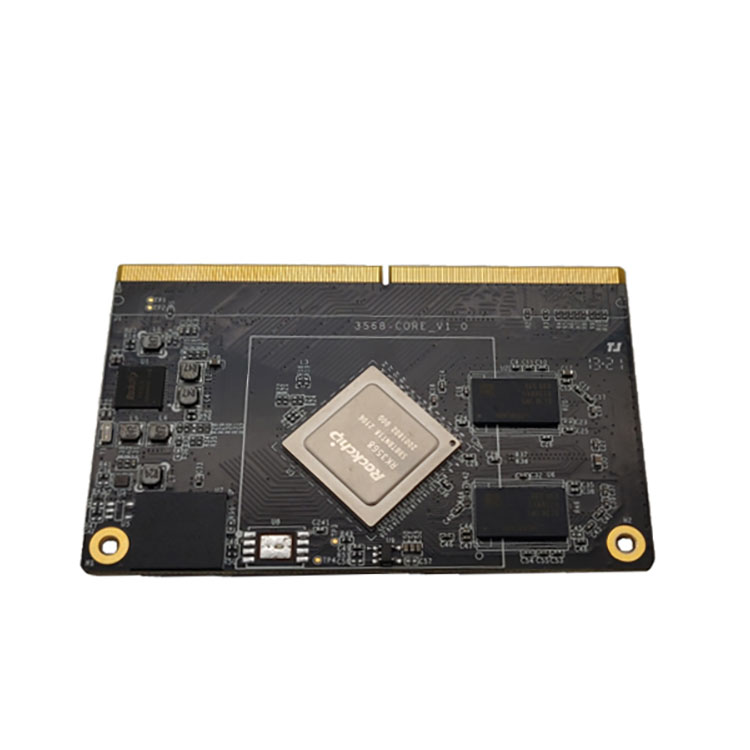
- English
- Español
- Português
- русский
- Français
- 日本語
- Deutsch
- tiếng Việt
- Italiano
- Nederlands
- ภาษาไทย
- Polski
- 한국어
- Svenska
- magyar
- Malay
- বাংলা ভাষার
- Dansk
- Suomi
- हिन्दी
- Pilipino
- Türkçe
- Gaeilge
- العربية
- Indonesia
- Norsk
- تمل
- český
- ελληνικά
- український
- Javanese
- فارسی
- தமிழ்
- తెలుగు
- नेपाली
- Burmese
- български
- ລາວ
- Latine
- Қазақша
- Euskal
- Azərbaycan
- Slovenský jazyk
- Македонски
- Lietuvos
- Eesti Keel
- Română
- Slovenski
- मराठी
- Srpski језик
Design of the core board
2022-02-23
With the development and trend of the electronics industry, as well as the growing consumer groups, the rapid upgrading of consumer electronics. The introduction of the concept of the core board effectively reduces the development time and difficulty. However, some developers still know little about the basic concepts and processes of the core board, so here is a technical summary and experience sharing. If there is any confusion, please point it out and make progress together.
The core board, as the name suggests, is a function or the core device of a circuit board. This core device is actually a circuit board, but this circuit board is highly integrated, integrating CPU, storage device and pins, and connecting it with the supporting backplane through pins to realize a system chip in a certain field.
For example, the GPRS module, it can be seen that there are very few peripheral devices, and only an antenna socket and a SIM card holder are needed outside the module to complete the communication function, and it can even be regarded as a complete 2G mobile phone. The external MCU uses the AT command set to control and command the module to make the corresponding initialization process and networking functions through the serial port. It can be seen that the size of the module is not the size of a SIM card holder, but the functions that can be achieved are surprising.
WIFI module with integrated IEEE 802.11 b/g protocol and embedded IPv4 TCP/IP stack in a compact memory package with low millions of instructions per second (MIPS) capability. If the GPRS module is combined with the WIFI module, it becomes our common mobile WIFI hotspot. If we use independent devices to complete all the functions of these two modules, one is that the cost exceeds the budget, the other is that the design time is long, and the third is that the design is very difficult. For our current market flow, if the design cycle of a product squeezes the product life cycle, it will make investment recovery more difficult, or the investment will fail directly. Therefore, it is in line with the trend of market development and product survival to use the functions already realized by the core board to be added to the secondary backplane to develop products.
Based on some of the above descriptions and product design experience, the advantages of using the core board are summarized as follows:
1: Reduce design difficulty, speed up R&D and design, and prolong product life cycle;
2: Increase system stability and maintainability;
3: Improve development efficiency and avoid repeated design and verification of the same functional circuit;
4: Reduce product cost and increase product competitiveness;
5: The core board has a good technical support team, which is conducive to development.
While there are advantages and disadvantages, using the core board will also have certain disadvantages, which are summarized as follows:
1: It is easy to achieve technological monopoly and technological blockade;
2: Product survival is limited. For example, product development depends on the core board. If the core board is out of stock, the product will not survive, and poor competition in sales can be achieved;
3: R&D personnel rely on the use of the core board, which will produce an inert thinking, which is not conducive to long-term technological development;
After summarizing the pros and cons, let's summarize the development process of the core board:
1: Customer demand survey (according to the customer's big data survey and market frontier analysis, design the core board suitable for the customer to avoid the price and the market).
2: Scheme confirmation and overall development difficulty analysis (combined with the technical team ability and technical solution ability to evaluate and analyze, to avoid the product being limited by the level of development technology).
3: Confirm the plan and start research and development (need to consider the stability and maintainability of the core board)
4: Material procurement and supplier evaluation confirmation (Contact multiple suppliers for key materials of this core board solution to prevent product shortages from later supply shortages and limit product survival)
5: Core board template debugging
6: Production and customization of the core board test frame (considering the test and survival convenience in large quantities)
7: Official board debugging of the core board
8: Comprehensive environmental test of the core board (after completing the basic industry test standards, it should also comprehensively conduct targeted tests in the areas where the core board may be used to preserve reliability)
9: Core board sales stage
10: Continue to improve the core board according to sales feedback.
The core board, as the name suggests, is a function or the core device of a circuit board. This core device is actually a circuit board, but this circuit board is highly integrated, integrating CPU, storage device and pins, and connecting it with the supporting backplane through pins to realize a system chip in a certain field.
For example, the GPRS module, it can be seen that there are very few peripheral devices, and only an antenna socket and a SIM card holder are needed outside the module to complete the communication function, and it can even be regarded as a complete 2G mobile phone. The external MCU uses the AT command set to control and command the module to make the corresponding initialization process and networking functions through the serial port. It can be seen that the size of the module is not the size of a SIM card holder, but the functions that can be achieved are surprising.
WIFI module with integrated IEEE 802.11 b/g protocol and embedded IPv4 TCP/IP stack in a compact memory package with low millions of instructions per second (MIPS) capability. If the GPRS module is combined with the WIFI module, it becomes our common mobile WIFI hotspot. If we use independent devices to complete all the functions of these two modules, one is that the cost exceeds the budget, the other is that the design time is long, and the third is that the design is very difficult. For our current market flow, if the design cycle of a product squeezes the product life cycle, it will make investment recovery more difficult, or the investment will fail directly. Therefore, it is in line with the trend of market development and product survival to use the functions already realized by the core board to be added to the secondary backplane to develop products.
Based on some of the above descriptions and product design experience, the advantages of using the core board are summarized as follows:
1: Reduce design difficulty, speed up R&D and design, and prolong product life cycle;
2: Increase system stability and maintainability;
3: Improve development efficiency and avoid repeated design and verification of the same functional circuit;
4: Reduce product cost and increase product competitiveness;
5: The core board has a good technical support team, which is conducive to development.
While there are advantages and disadvantages, using the core board will also have certain disadvantages, which are summarized as follows:
1: It is easy to achieve technological monopoly and technological blockade;
2: Product survival is limited. For example, product development depends on the core board. If the core board is out of stock, the product will not survive, and poor competition in sales can be achieved;
3: R&D personnel rely on the use of the core board, which will produce an inert thinking, which is not conducive to long-term technological development;
After summarizing the pros and cons, let's summarize the development process of the core board:
1: Customer demand survey (according to the customer's big data survey and market frontier analysis, design the core board suitable for the customer to avoid the price and the market).
2: Scheme confirmation and overall development difficulty analysis (combined with the technical team ability and technical solution ability to evaluate and analyze, to avoid the product being limited by the level of development technology).
3: Confirm the plan and start research and development (need to consider the stability and maintainability of the core board)
4: Material procurement and supplier evaluation confirmation (Contact multiple suppliers for key materials of this core board solution to prevent product shortages from later supply shortages and limit product survival)
5: Core board template debugging
6: Production and customization of the core board test frame (considering the test and survival convenience in large quantities)
7: Official board debugging of the core board
8: Comprehensive environmental test of the core board (after completing the basic industry test standards, it should also comprehensively conduct targeted tests in the areas where the core board may be used to preserve reliability)
9: Core board sales stage
10: Continue to improve the core board according to sales feedback.
The above process is similar to the general product design process, but the audience should be considered. The core board belongs to the upstream link of research and development. The stability and maintainability of the core board will directly affect the development difficulty of downstream research and development and the stability of the final product. Therefore, the design focus of the core board lies in cost, stability, and difficulty of secondary development. After considering these three points, I believe that this core board will have a better sales audience.




